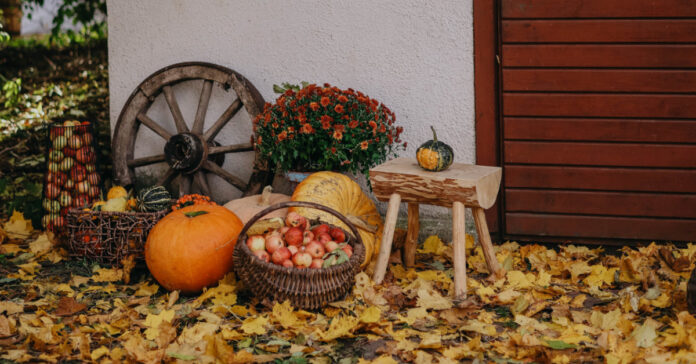A week ago, we went to a brewery in a not-too-distant town and enjoyed a gathering of friends. It was a warm night, and we enjoyed their outdoor seating area.
This week, temperatures were in the low 20s, making for the coldest nights in six months. When winter arrives, it comes on strong. We went from temperatures approaching 70°F, at least in the sun, to 20 in about 48 hours as the cold swept in from the northwest. It remains to be seen if we will have a week or two of Indian Summer in November.
Thanks to the cold nights, there are no more flowers for the bees. The undergrowth in the woods has browned out and died. We’ve gone from 30 feet of visibility to 200 or more since the leaves have fallen. That makes it nicer to walk off the trails. The woods will continue to grow increasingly open until late March.
We’ve had some nights where the wind howled, which is not uncommon on the mountain. Recently, so much wind swept up the valley it did us the courtesy of blowing most of the leaves off the dirt road. There isn’t much slipperier than a layer of wet leaves on gravel.
We still have rakes and a leaf blower, but we rarely use them. We don’t have much of a lawn, and the winds sweeps it clear. Likewise, we have snow shoves but don’t use them for anything other than cleaning the steps to the front porch. We have no sidewalk or other paved areas where we can shovel; it’s all gravel.
Frozen Chickens
The hose froze, so I put it away and now have to fill a five-gallon bucket of water every day to water the chickens. We’ve had an inch of ice on top of their watering basin several days in a row. That really does make it seem like winter. It isn’t freezing solid yet, nor do I have to water them again in the afternoon. In the winter, I have to water them twice because the waterer freezes so quickly.
The chickens appear to be surviving the cold just fine, despite this being the first winter for all 20 birds. I’m giving them more sunflower seeds in their scratch so the sunflower oil will help them keep warm. They are eating more feed as it gets colder. I assume that is in part because they need the calories but also because there are fewer bugs and grubs to be found while free ranging. They have helped us finish the last of the zucchini from the garden.
My wife pulled the last of the green and red peppers before the hard frost hit. She likes the sweeter red ones and uses them in cooking. We’ve given away at least a dozen green peppers so far. More are in our freezer.
El Nino and Winter Weather
Depending on where you live, the El Nino weather pattern we are experiencing means winter will be either colder or wetter, possibly both. After the past week, colder seems believable, but I am reserving judgment until we have another month or two under our belts.
The longer I live close to the great outdoors, as opposed to in the city, the more I become convinced that while there may be a statistical “average” amount of rain fall or an average temperature on a given day, there is no “normal.” Every year is different.
Range Time
My neighbor is going to come over to do some firearms training this weekend. While I approach shooting from a tactical perspective, his experience is hunting, and he owns a couple traditional lever actions including a venerable .30-30. He has a 9mm pistol and a 9mm carbine for homestead defense, so we’ll set up the metal targets and shoot them at different yardages. I also promised to show him how to use an AR-15. If he takes to it, he can borrow one of mine when the SHTF.
The cost of 5.56 or .223 has reportedly increased 39 percent in the three weeks since the news spread about ammo shortages. That means a round that used to cost 72 cents is now $1. While I am comfortable with my supply of 5.56, I ordered another 640 rounds of .300 Blackout, which consumed my prepping budget for the month. Most of the order is ammo loaded with 110 grain supersonic bullets but I did also ordered a few magazines worth of 220 grain subsonic rounds. (For a while there, subsonic ammo was hard to find.) They were $12.99 and $15.99 per box, respectively.
When I first started buying .300 blackout more than five years ago, boxes of 20 were usually $26 or more. If I found ammo at $1 per round, I would snap it up. I am happy to see these prices have fallen over the years as I prefer the 110 grain .300BO to the 55 grain 5.56 in my area of operations. The .300 BO is no long-range round, but given the heavy tree coverage around here, we have almost no long range shots. It is also an excellent choice for AR pistols with short barrels because it loses less velocity than the 5.56.
Read our post on carrying heavy and make sure you are ready.







